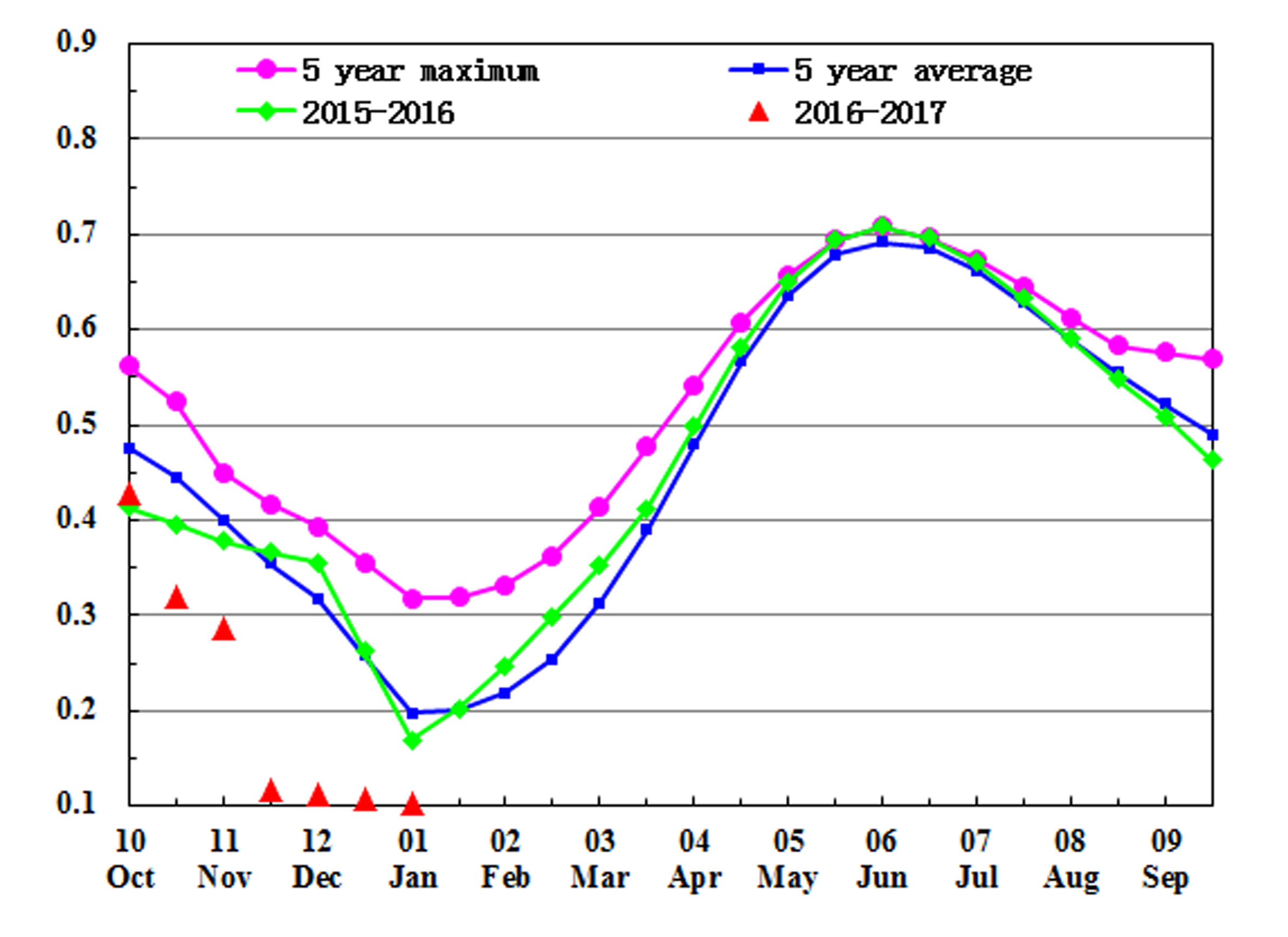
Bulletin
wall bulletinMenu
Authors: 超级管理员 | Edit: xingqiang
From October to January in Ukraine, the main crops in the field are maize, ready for harvest in October, and winter cereals in their early stages. On a national level, agroclimatic and agronomic conditions other than RAIN were below average over the reporting period (RAIN, +33.0%; RADPAR, -7%; TEMP, -1.7°C, CALF, -11.74 percentage points; and maximum VCI, 0.67). As illustrated in the section on the Central Europe to Western Russia MPZ (chapter 2.7), the increase in biomass production potential is large (BIOMSS >20%) in the southern part of the country. A major decrease in BIOMSS (up to 20%), however, is observed in the northern, eastern, and western parts of Ukraine, along the borders of Russia, Belarus, Poland, and Slovakia.
The NDVI departure trends show that over the reporting period, 17% of the country’s agricultural land undergoes a decline in NDVI from October to December, with an increase starting after that. Another 58.9% show a decline from October to mid-December, and also an increase after. For another 9.7% of the country, the initial decrease in NDVI only happened up to mid-November, again followed by an increase. Finally, 14.4% of cropland experienced stable NDVI from October to mid-November, with also an increase after that. Maximum VCI varies widely over the reporting period. What looks like unfavorable crop conditions at the national level (BIOMSS down 4%) is misleading: the country experienced early snow from the end of October, followed by a short lasting snow cover in November and almost permanent and nationwide presence of snow throughout December and January. The snow cover accounts for low NDVI and, considering also abundant water supply in the form of rain and snow, it is likely that the crop prospects in Ukraine are at least average at the time of reporting.

(a) Spatial NDVI patterns compared to 5YA

(b) Crop condition development graph based on NDVI

(c) Maximum VCI
